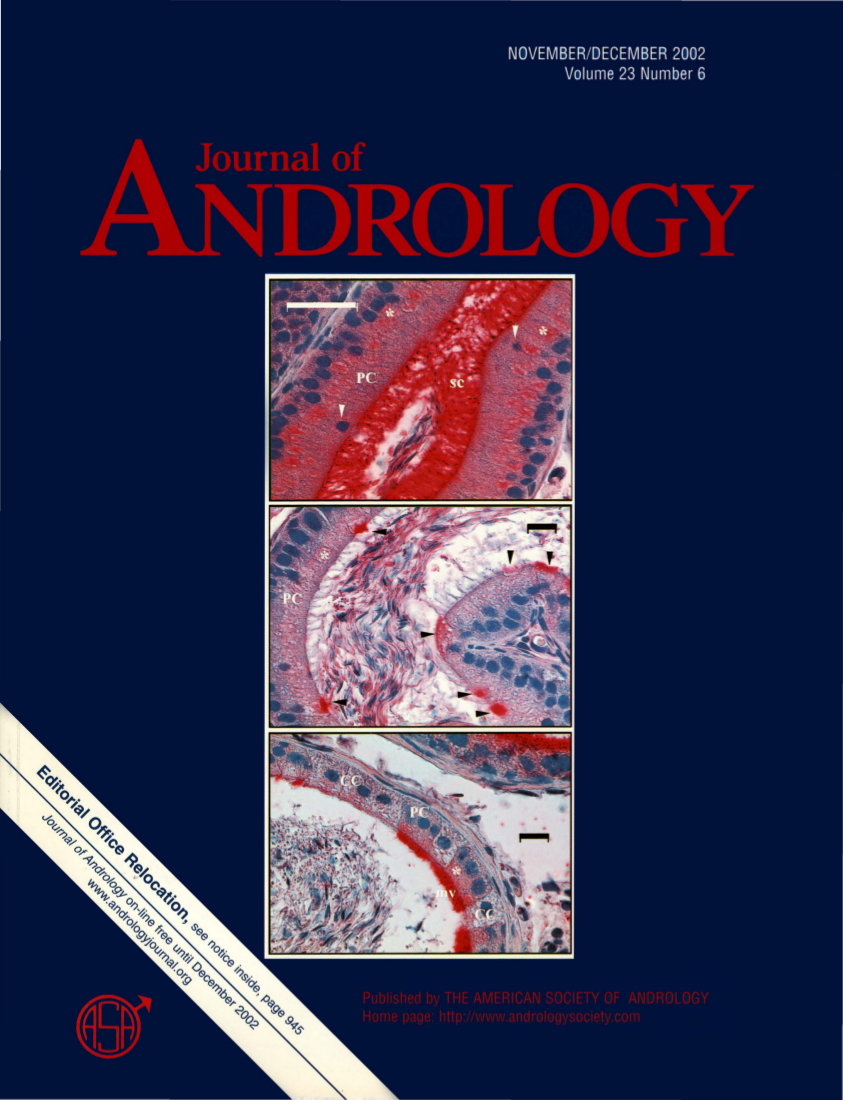Prevention of Seminiferous Tubular Atrophy in a Naturally Cryptorchid Rat Model by Early Surgical Intervention
Abstract
ABSTRACT: In an attempt to determine whether the seminiferous tubular atrophy of the cryptorchid testis is preventable by early surgical correction of the cryptorchid state, aberrantly developed gubemacula destined to result in a cryptorchid testis in the Long-Evans cryptorchid (LE/ORL) rat were surgically reimplanted to the bottom of the scrotum on day 10 to 12 of age. Testis descent was monitored and the changes in testicular histology and in the volumes of the seminiferous tubules and Leydig cells were examined at day 60. As expected, normal testis descent occurred on or about day 25. Compared to untreated undescended testes at day 60, relative seminiferous tubular volumes (volume: % ± SEM) were significantly increased by early surgical reimplantation of the gubemacula (89 ± 1 vs. 66 ± 3; P < 0.01). Absolute seminiferous tubular volumes (μ1 ± SEM) were also significantly increased by early surgical intervention when compared to undescended nontreated testes (893 ± 27 vs. 170 ± 12; P < 0.01). The testes of the surgically corrected cryptorchid animals were similar in all respects to those found in the descended testes of the sham-operated controls. Relative Leydig cell volume (% ± SEM) was increased in the untreated cryptorchid testes compared to the surgically corrected testes (5.2 ± 0.6 vs. 1.2 ± 1.0; P < 0.05). Relative Leydig cell volumes in the surgically corrected testes were not significantly different from those found in the sham-operated descended controls. A modest but significant (P < 0.05) increase in absolute Leydig cell volume was also noted in the cryptorchid testes when compared both to normal controls or surgically corrected cryptorchid testes. From these observations, we conclude that early gubemaculopexy reverses the histologic changes normally seen in the cryptorchid rat testis to a relatively normal histologic architecture. These data provide experimental evidence to support the value of orchiopexy in the treatment of cryptorchidism.




